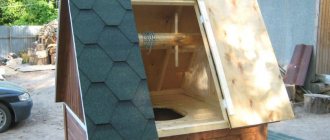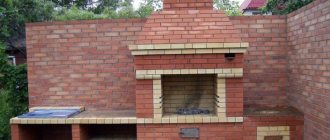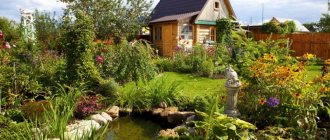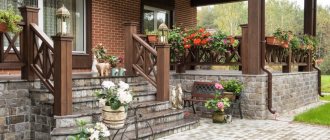Any body of water, be it natural or created by man, gradually becomes polluted over time. The reason for this may be the location or the vital activity of the organisms inhabiting it. That is why, in order to maintain the attractiveness of the reservoir and, accordingly, the territory in which it is located, you should either regularly clean the pond or install a special filter. The first is not very convenient and practical. It will take a week for a pond to become sufficiently clogged. And draining the water each time, washing the walls and refilling it again is an overly long, tedious and, most importantly, prohibitively expensive task. Thus, pond filters are a real salvation for owners of their own artificial pond. Especially if its area and volume are quite large. It is better, of course, to install a filter device before starting operation.
Purpose
Filters for ponds and reservoirs are irreplaceable devices. They successfully cope with the following tasks:
- preventing algal blooms on the water surface by destroying microorganisms that contribute to this;
- retention of small particles of debris, purification of water from them;
- getting rid of dirt and all kinds of impurities.
You can purchase a ready-made, complete device. But, if you have the desire and certain skills, it is quite possible to create homemade pond filters that are not inferior in quality to branded devices. You will only need to purchase a small list of tools and parts.
Types of filters
There are two main types that include pond filters. Namely - to pressure and non-pressure (flow). Their main difference is the operating principle. The first, no matter how surprising it may sound, are mostly less expensive. They are especially practical if there is a fountain. That is, an additional structure along which a flow of water must move under strong pressure. Flowing through the draft created by the pump under pressure to the filter element, the water goes through several purification stages, after which it returns to the reservoir.
Pressure filters for ponds are good because they are miniature: the compact device does not take up much space, maintaining the natural appearance of the reservoir. Some models of this type are equipped with an ultraviolet sterilizer. Thanks to this element, in addition to excellent water purification, you can also obtain effective disinfection. That is, cleansing from various harmful bacteria and other microorganisms. Judging by the reviews, the CFP 500 and CFP 380 models have proven themselves to be the best.
Equipment replacement
In this case, the idea is to use an aquarium air compressor instead of a pump. In this case, you will also have to replace the electrical cable that supplies power to the pump with an air hose. Air bubbles should be directed vertically upward, where the tube with the filter elements is located. Foam rubber is usually used as such an element.
It is the movement of air bubbles that will ensure the water cycle in the filtration system. One of the disadvantages is that the performance of the air system is quite low. However, there are also positive qualities, which are that, firstly, there will be no electrical elements in the water, and secondly, this method perfectly aerates the water in the pond. Naturally, any system - electrical or air - requires maintenance.
Gravity filters
Non-pressure devices are more versatile and, accordingly, in demand. For this reason, despite their more primitive design, gravity filters often cost more than pressure models. These filters differ from the flow type by their considerable dimensions and impressive performance. As noted in user reviews, the best model is Bio KNBF 20000. Another good option is CBF 350B.
The principle of operation of such devices is also somewhat simpler: water flows inside due to traction, and out - just as in pressure samples - by gravity (via gravity), that is, freely flowing back into the reservoir. Such a filter must be installed above the water line. Otherwise, the device will physically not be able to function.
When purchasing a gravity filter, you also need to buy a pump in addition to it, which will supply water to the device. By the way, making pond filters that operate using gravity with your own hands is not that difficult.
Option two - how to make a filter for a decorative pond from a small container
If the pond holds up to 5-8 cubic meters of water, you will need a more powerful treatment system.
You can make such a filter for a country pond with your own hands from a small plastic container. There should be a sealed lid on top that is securely fixed to the body.
The installation works simply: the pump sucks water into the container in which the filter component is located, and after that the purified liquid is returned to the pond.
To make a filter you will need:
- a medium-sized plastic container (approximately 60*30*30 cm or so);
- drain siphon;
- submersible pump with a capacity of up to 1000 l/h;
- silicone based sealant;
- foam;
- fitting with nut;
- clamps;
- hard washcloths;
- hose.
Every summer resident has much of this in his household, and everything else can be bought at a hardware store or at the market. The most expensive part of the installation is the water pump.
Suitable filter components:
- expanded clay wrapped in agrofibre;
- foam rubber sheets;
- plastic mats with holes (they are usually laid near the entrance doors) or plastic/rubber mesh;
- washcloths or sponges, etc.
- On the side of the bottom of the container we drill a hole for the siphon, through which water will penetrate inside. We use sealant to secure the connection.
- The hose outlet to the pump will be located on the opposite side at the top of the container. We drill the wall and tightly fasten the fitting.
- We attach a hose to the fitting, and connect the other end to the pump.
- We cut out the required size (according to the size of the container) mesh from the selected material. It is placed at the very bottom of the container (you can install it on plastic legs) just above the water inlet from the siphon.
- Fill the container with the selected filter media; it is better to use a multi-layer option. First, small filter elements (plastic bioballs) are laid, then we lay foam rubber in two or three layers. The last layer should not overlap the water outlet. Then a rubber mat is laid that matches the size of the container; it will prevent the foam from moving under water pressure. Close the lid tightly.
- We install the structure in a prepared place so that it stands securely and does not move under the influence of vibrations of a running pump.
- We connect the pump to the power supply and protect the outlet from moisture to avoid short circuits.
- After this, do a test run of the assembled installation and make sure that water circulates normally through our cleaning container.
Don’t forget to clean it periodically, rinsing the filler to remove any sludge and dirt that collects inside.
Option three - a large homemade filter for cleaning a pond with fish from a barrel
For large reservoirs populated with fish, the above installations are not suitable due to insufficient productivity, but a more powerful homemade system can be made. Its cost largely depends on the filter material used and the power of the pump.
Filters for fish ponds differ from systems for ordinary reservoirs in that they must retain the waste products of the inhabitants.
Therefore, the installations must be more powerful.
Structurally, the filter for a pond with fish from a barrel is similar to the previous container system, but differs in larger dimensions and a powerful pump.
To clean 50-60 cubic meters, you will need an installation consisting of:
- 200 liter barrel;
- taps and connecting fittings;
- filter materials to retain contaminants;
- pump with a capacity of up to 3500-4000 l/h; fine-mesh mesh;
- hose or PVC pipe.
We will use several fillers as filter components. A plastic barrel with a lid is suitable for the body, but you can use a metal one; it will not expand if the top layer becomes clogged.
Device elements
This type of filter consists of the following cleaning components:
- hard brushes designed for mechanical cleaning of the water area from large contaminants such as leaves, algae, fallen from trees, as well as silt and other debris;
- the coconut mat sifts out small particles for more thorough cleaning;
- a foam sponge retains the smallest, invisible particles of dirt and harmful microorganisms, and at the same time promotes the proliferation of beneficial bacteria;
- capsules filled with a special composition also help improve aquatic microflora.
By the way, this type of filter is best suited for ponds of medium size and populated with plants. These fish pond filters will also be quite practical. They can work all year round. But the most favorable period for such a device begins in late spring and ends in early autumn. That is, in warm weather.
If you don't filter the pond water
Let's say you built a pond, planted it with plants and even introduced fish. But they didn’t filter the water. What are the prospects for your reservoir?
The water in an untreated pond blooms. In such a reservoir, cultivated plants and algae grow poorly, and fish die
The same processes take place in all closed reservoirs, and they will begin in your pond. Dead plants, fish excrement, leaves and branches that have fallen into the water, and wind-blown soil will settle to the bottom, where microorganisms will begin to decompose them. These will be anaerobic microorganisms, because there is little oxygen at the bottom. Simply put, putrefactive bacteria will take over. Rotting will “wash” oxygen out of the water, while simultaneously saturating it with nitrogen and phosphorus compounds - a source of nutrition for phytoplankton. That is, “the water will bloom.” This ensures that fish will die.
Further more. A layer of bottom sediments is growing, oxygen has long been gone: underwater plants have suffocated, not having time to produce it in the water, muddy from plankton. There is active gas formation in the pond, the smell of rotten eggs has appeared (this is hydrogen sulfide), and the water surface has become covered with a cloudy film. The process of waterlogging is underway. In “favorable” conditions, a season will be enough for a pond full of life to turn into a stinking puddle.
Therefore, when arranging a pond, do not forget about the pond filter.
It doesn’t matter whether it is a pressure filter, a flow filter, or a homemade filter. The main thing is that its power is enough to maintain order in the pond, and then the pond will become your pride and decoration of the site
https://101dizain.ru
When creating or planning a film pond (see article " "), do not forget about installing a filtration system. Otherwise, you will experience rapid growth of algae during the warm season, pollution from fish waste, pollen and leaves falling into the pond and decomposing at the bottom. In this article we will look at the most common and effective filters for decorative artificial ponds.
Ponds up to 8 m 3 (including ready-made PVC forms):
the pressure filter is buried in the bank and can be decorated
Effective filtration of the upper layers Active aeration and sterilization of water Impurities that enter the reservoir do not have time to sink to the bottom and begin to decompose
Select taking into account the intended use of the reservoir (it is necessary to increase the productivity of the system by 2 times when planning to launch fish, and by 3 times - koi carp)
Select the maximum diameter (supported by the filter and pump) - in this case, friction losses will be lower and the filtration efficiency will be higher. Be sure to cut off the excess part of the fitting (filter and pump) of smaller diameters, otherwise the filtration efficiency will be significantly reduced!
A properly selected and high-quality pond filter is an indispensable part of the water system, designed to clean the reservoir from harmful substances or pathogenic microorganisms. Such a device for purifying pond water differs not only in design features, but also in power and cost.
By filtering method
Depending on the cleaning method, pond filters are divided into biological, mechanical and mixed.
The first are focused on removing organics and chemical components from water such as nitrites, nitrates, ammonia inclusions and other unsafe chemical components. All these substances are harmful to fish living in the reservoir and can cause active blooms in the water, and therefore their elimination is a mandatory measure. The main part of such a filter is a substrate saturated with useful substances. Plastic balls, porous lava, and even absorbent foam sponges are used as this substrate.
functioning
The principle of operation of the biofilter is as follows:
- Using a powerful pump, water rises from the bottom of the main pond and is delivered through special pipes or a connecting stream to the “swamp”.
- There it moves between plant roots, is cleaned, filled with oxygen, warms up a little, and then returns.
Thus, organic matter from a large reservoir settles in the regeneration zone, where it nourishes the planted plants. At the same time, the algae that cause the bloom in the main pond are left with virtually no nutrition and therefore “die.”
Interesting fact! Higher aquatic plants are recommended to be used for auxiliary cleaning of liquid waste from industrial enterprises: they are able to clean them of dangerous heavy metals and petroleum products.
To ensure the operation of the biofilter, it is important to organize the constant movement of water from the main pond through the regeneration zone Source prudiki.ru
Mechanical filters
Mechanical models are used to remove insoluble particles of debris (by the way, the simplest mechanical cleaning can be carried out even with the help of an ordinary net, which is used to catch dirt from the water). Pond filters of this type are divided into roll, belt and drum types. The first ones are equipped with special fleece tapes, which are replaced with newer ones as the material ages. These tapes collect all the contaminants present in the reservoir. In drum filters, dirt and debris remain on the main element of the device, after which they are automatically or manually removed from its surface. Belt mechanical filters operate on a similar principle. The only difference is that instead of a drum they have an artificial felt tape.
By the way, skimmers that collect debris from the surface of the water are also considered mechanical filters.
Main part of the work
Tools and materials:
- polypropylene pipe;
- expanders;
- sealant;
- containers;
- stationery knife.
Skimmer device made from plastic bottles.
The first step is to remove the lids from those 2 containers that have reverse closing methods, glue them together using sealant, and after drying, a hole is cut in the lids of such a size that only the base remains, which will connect the 2 containers.
The third one just breaks through from below. To do this, it is most convenient to use a stationery or construction knife. The diameter of the hole should be slightly smaller than the diameter of the pipe so that the joint is extremely tight, but the main thing is not to overdo it with a narrow hole so that the plastic does not burst.
Making a pipe with your own hands can be simple, or you can make it more effective. The simplest option is to use a straight tube that will stretch from the very first container to the last, but the design can be significantly complicated, which will significantly improve the quality of the device. To do this, you will need to use 2 pipe expanders, as well as 2 tubes of different diameters, all of which are connected in series so that the largest expander is at the bottom and the narrowest pipe is at the top. In this case, the system will start from the place where the lower 2 containers are connected and end at the top one.
After all the main work is completed, you can begin to connect all joints with sealant
It is important that it is marked as suitable for use in aquariums, because... anyone else will simply destroy all living creatures
Filtration is a delicate matter
If more thorough and skillful cleaning is required, the best solution is ultraviolet filters for water purification. For the pond and the fish living in it, this device is completely safe, but all algae and bacteria, which spoil the appearance of the reservoir with their vital activity, will be quickly and reliably eliminated. In general, you can make the best choice only by taking into account all the features of a particular pond.
After all, what is ideal in one case is completely unsuitable for another. In addition, not every reservoir owner will consider it necessary to spend money on purchasing such a device.
General recommendations
Pool skimmers, regardless of whether you buy them or make them yourself, have a limited range of action. Most homemade and ready-made models of purification filters are capable of purifying twenty-five square meters of surface water, so you must calculate in advance how many systems need to be installed. In outdoor pools, skimmers are installed on the side from which the wind blows most. The flow of water will ensure that liquid enters the device at a faster rate. If the structure is closed, skimmers need to be installed evenly around the perimeter, having previously calculated the number of devices. Cleaning can be combined with periodic disinfection. To carry out the latter, chemical reagents are placed in an appropriate container.
Sand filters
Sand filters for ponds are quite often used. These devices have many advantages. First of all, their relatively low cost attracts attention. Their maintenance is also quite simple and inexpensive, but the quality of water purification is always at its best. The reliability and unpretentiousness of such devices make them one of the best candidates for purchase.
The main element of such a filter is a mixture of quartz sand purified and sifted using a special technology, and in addition gravel. Cleaning of this filler is carried out by backwashing. Thus, sand filters for ponds are among the most beneficial in terms of price-quality ratio. Reviews from satisfied owners of cleaning devices are clear confirmation of this.
DIY filter
If you have minimal finances, but have more than enough desire to do something with your own hands, you can, having acquired a list of necessary parts, start making a handmade filter. In general, DIY pond filters will cost relatively little - up to $250. To be more precise, this figure mostly depends on the filler. Only there is a small, but important “but”. It’s one thing to use a purification device for a simple pond, the living inhabitants of which are algae and other plants. And it’s quite another thing to create filters for a fish pond with your own hands. After all, fish, as you know, pollute water with waste from their vital activity much more intensively than aquatic plants. Thus, a purification device for a reservoir inhabited by fish must be more powerful.
So, to create a device for cleaning a reservoir with a volume of about ten cubic meters, you will need 2 medium barrels, adapters, connections and taps. All this can be bought from companies that sell plumbing fixtures and pipes for cold and hot water, and from companies that deal with various equipment for swimming pools.
How effective is bioplateau for water purification?
Whether to install expensive, energy-consuming filters that require regular maintenance or give preference to natural cleaning is up to each owner to decide individually. Many people prefer the first option due to their skepticism towards cheap natural cleansing systems.
- However, the advantages of bioponds are obvious:
- This is an ecological method that benefits the environment and does not disturb its balance;
- operating costs are several times lower compared to using purchased filters;
- The water in the bioplato is not only purified, but also saturated with oxygen. And thanks to the bactericidal abilities of many plants, it also becomes useful;
- natural plantings perfectly decorate personal plots. And filtering units need additional decoration;
- filters may fail, which will require new expenses, and the natural plateau, gradually expanding, will increase efficiency and eliminate additional investments.
An artificial reservoir with living flora is a cheap and reliable solution for cleaning water bodies. The denser the plantings in it, the more effective the cleaning will be. This result is achieved after 1–2 years, until the plants grow a little. To obtain a faster effect, you need to fill the bioplateau with plants as much as possible.
Such an artificial ecosystem will harmoniously fit into any landscape and satisfy the most demanding owners. In addition to its benefits, it will decorate the area and make it a cozy place to relax.
https://econet.ru/articles/prud-kak-zerkalo-delaem-bioplato-svoimi-rukamihttps://kak-svoimi-rukami.com/2016/02/bioplato-svoimi-rukami-na-uchastke/https: //fermer.blog/bok/blagoustroystvo/iskusstvennye-vodoemy/prudy/uhod-za-prudom/ochistka-pruda/16411-bioplato-dlja-pruda.html
On what principle does such a device work?
How does the device itself function? Water is taken from the bottom of the reservoir and, under the action of pump thrust, is delivered to the filter device. After going through several layers of cleansing, she returns to the pool again. This time - by gravity. You will also need to make a hole in the bottom of the container to drain dirty water. It will come in handy when flushing the device.
The best filter substrate options for different filter levels are as follows:
- At the very bottom, at the bottom, it is better to lay a layer of expanded clay or simple shells. In addition, it is recommended to pack them in separate nets.
- The middle level can be ceramic rings or bioballs.
- At the very top there is a layer of rings of padding polyester or other fine-bubble synthetics.
The filter, the creation of which is described above, is well suited for a “fish” pond. If there are no inhabitants that heavily pollute the water, and the area and volume of the pond is small, you can make an even simpler filter. It will do a good job of purifying water. Moreover, its cost will be minimal, its performance will be excellent, and its maintenance will be simple and quick.
Nuances of operation and maintenance
Those wishing to build their own pool at their dacha should think in advance and provide for ways to maintain it. Water must be filtered constantly, especially if it is initially dirty (for example, rusty) or has turned green after forced downtime.
If the water is clean, then in order to save electricity, you can turn it on twice a day for 5-6 hours or once for 10-12 hours. During this time, the entire volume of water in an average reservoir is 15-20 cubic meters. m will change twice.
As the filter element is used, it becomes covered with a layer of contaminants, which interferes with the further operation of the unit. Therefore, the sand should be washed.
A film forms on the surface of the filter element - caked contaminants. This layer interferes with the passage of water and increases the pressure in the system
Procedure #1 - washing the filler
The frequency of cleaning sand from contaminants depends on the intensity of use of the pool, the degree of contamination of the contents, the composition and amount of chemicals used. You can use the recommendation to wash the filler once every 7-10 days. However, for a pressure-type filtration system, you should monitor the pressure gauge readings.
The normal pressure in the system is 0.8 bar. If the indicator reaches 1.3 bar, then the sand needs to be washed.
For the cleaning process, it is necessary to ensure the flow of water under pressure into the lower chamber of the filter - into the intake device. To do this, arrange the appropriate wiring in advance, so you can change the direction of flow by simply switching the taps.
Regardless of the method of connecting the system, the filter needs to periodically clean the filler from a dense layer of contaminants. To do this, clean water flows from the bottom up and dirty water is discharged into the sewer or a separate tank. Please note that in this circuit the valve for the outlet to the pool is closed
If the wiring is not installed, you can rearrange the hoses. For the injection system, the hose is removed from the upper fitting and attached to the lower one (to the fitting connected to the water intake). If the pump is on suction, then transfer the hoses from the pump.
The suction is disconnected from the fitting of the intake device and connected to a source of clean water or lowered into the pool. Pressure - connect to the outlet of the water intake. A hose is attached to the upper fitting to drain the flushing liquid into the sewer or into a separate container.
The pump is turned on, and the water under pressure loosens and washes away the accumulated layer of dirt. The sand should be washed until the drained washing liquid becomes clear.
Procedure #2 - replacing sand in the filter
Gradually, the filter element becomes heavily clogged with fatty and organic substances, skin particles and hair. Such sand is no longer able to provide proper water purification. Therefore, it needs to be completely replaced.
The filler is replaced as follows:
- Close the water supply tap.
- Pump out the remaining water as much as possible - if the pump is on supply, then quite a lot of liquid will remain in the filter.
- Turn off the power supply to the pump.
- Scoop out all the filler. Contaminated sand is simply teeming with bacteria, so this should be done carefully and with gloves, avoiding it coming into contact with mucous membranes and eyes.
- Pour some water into the filter reservoir - about 1/3 full. The liquid will soften the mechanical impact of falling sand on structural elements.
- Add the required amount of filter element.
- Open the water supply.
- Perform backwash. If the hose for purified water is simply thrown over the side of the pool, then you can skip this step and drain a certain amount of liquid into the ground when putting the system into operation.
- Enable filtering mode.
When using quartz sand as a filler, it will need to be completely replaced every three years.
To increase maximum operating efficiency, the filtration system is installed in close proximity to the pool. At the same time, for ease of maintenance, access to the unit must be free.
For a pond without fish
To create such a filter, you will need little: only a medium-sized basin and a low-power pump for pumping water. First you need to make a horizontal opening at the bottom of the existing pelvis. The bottom, by the way, must remain untouched. The height of the opening should be about a decimeter, the width - up to two.
A flat stone should be placed in the resulting hole. A mixture of sand and cement must be poured inside the basin so that after smoothing it, a drain will form to the bottom of the cascade. Once the cement has hardened, it can be top coated with a waterproofing agent. This simple structure needs to be placed at the very top of the cascade, then about five stones up to 6 cm high must be placed inside. A sheet of plastic or stainless steel must be placed on top. Crushed stone is poured onto it, a layer of synthetic padding is placed, and only then the hose from the pump is connected. You can place pebbles or small stones at the very top. They will play the role of decorative elements. Of the entire structure, only crushed stone and padding polyester filler are subject to periodic replacement; the other components are very durable.
Thus, creating your own filter for a pond is not a difficult task. You just need to purchase everything you need and connect it to the pump. Such a device can even cope with a pool inhabited by fish, although it gets dirty much faster than usual and requires more thorough cleaning.
What is it used for?
An aerator for a pond (artificial) is a hydromechanical device that is used to clean ponds and supply oxygen. The second name for such installations is an air compressor. Thanks to such devices, the inhabitants of the pond will be able to breathe, the water will not “bloom” or become covered with a film, and an unpleasant swamp smell will not appear. All contaminants will settle to the bottom or accumulate on the surface in the form of foam, which is easy to collect.
Important! Aeration of an artificial pond is carried out all year, especially in winter, since the ice layer prevents the saturation of the water with oxygen. If you do not install an aerator for a decorative pond in cold winter, the pond will completely freeze due to the lack of flow, which will lead to the death of its inhabitants. A number of signs indicate the advisability of installing an air compressor:
A number of signs indicate the advisability of installing an air compressor:
- An accumulation of sludge that interferes with the normal circulation of substances.
- An increase in the number of fish and plants: the more there are, the more oxygen they consume.
- Temperature fluctuation: it is observed not only from season to season, but also throughout the day. An increase in temperature requires additional oxygen.
- Inability to obtain oxygen from the soil (due to the bottom covering), wind (due to its small size), rain and other precipitation.
Do-it-yourself fountains for a summer residence: original, unusual ideas, design A small fountain, installed on a country plot, soothes with the murmur of water and provides relaxation after a hard day...
When there is a deficiency of oxygen in the water, fish often swim to the surface for a portion of air. Snails also climb higher on the plants. If these signs are present, an air compressor should be installed as soon as possible to prevent the death of fauna.











